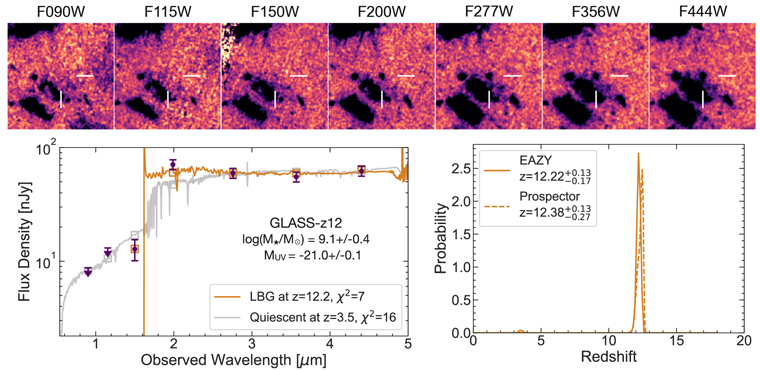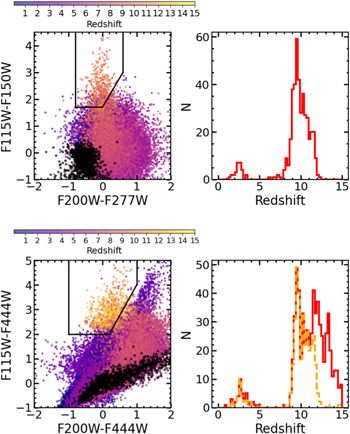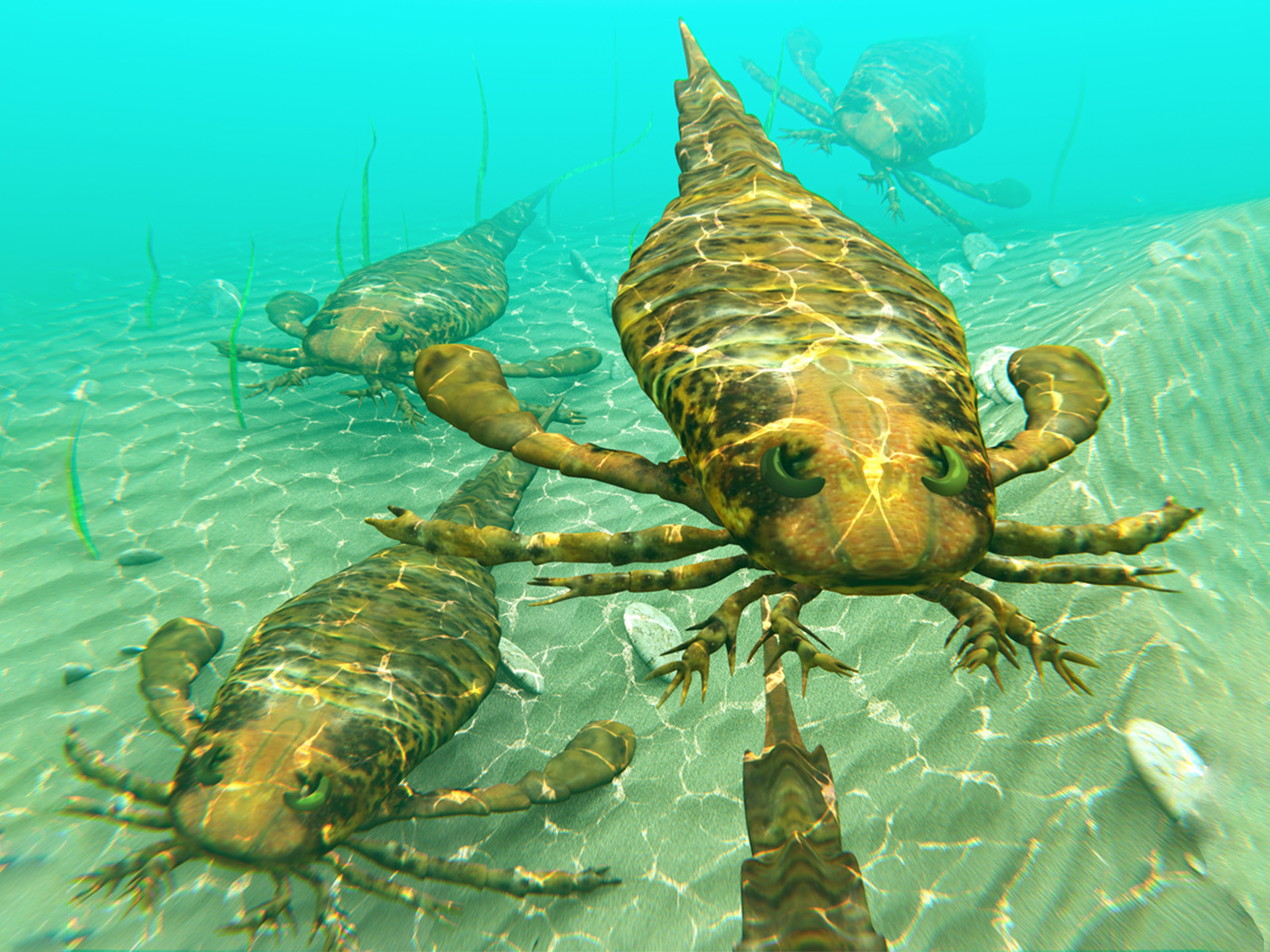2022-11-17 ペンシルベニア州立大学(PennState)
その結果、ビッグバンからおよそ3億5000万年後と4億5000万年後に存在した非常に明るい2つの銀河が見つかった。
Joel Leja研究員は、ウェブが撮影したような遠方銀河の赤外線データを解析するコードを開発し、それらが実際に初期宇宙を垣間見る最初の機会であることを証明した。
ウェブが最初のデータを公開したわずか 4 日間の分析で、研究者は 2 つの非常に明るい銀河を発見した。これは、ビッグバンからわずか 1 億年後、つまり約 138 億年前に恒星の誕生が始まった可能性を示している。また、この 2 つの銀河はビッグバンから約 4 億 5000 万年後と 3 億 5000 万年後に存在していたことが明らかになった。
<関連情報>
- https://www.psu.edu/news/research/story/bright-light-early-universe-opens-new-chapter-astronomy/
- https://iopscience.iop.org/article/10.3847/2041-8213/ac9b22
- https://iopscience.iop.org/article/10.3847/2041-8213/ac94d0/meta
JWST が捉えた、z ≈ 10-12 にある 2 つの非常に明るい銀河の候補 Two Remarkably Luminous Galaxy Candidates at z ≈ 10–12 Revealed by JWST
Rohan P. Naidu, Pascal A. Oesch, Pieter van Dokkum, Erica J. Nelson, Katherine A. Suess, Gabriel Brammer, Katherine E. Whitaker, Garth Illingworth, Rychard Bouwens, Sandro Tacchella, Jorryt Matthee, Natalie Allen, Rachel Bezanson, Charlie Conroy, Ivo Labbe, Joel Leja, Ecaterina Leonova, Dan Magee, Sedona H. Price, David J. Setton, Victoria Strait, Mauro Stefanon, Sune Toft, John R. Weaver, and Andrea Weibel
Astrophysical Journal Letters Published 2022 November 17
DOI 10.3847/2041-8213/ac9b22

Abstract
The first few 100 Myr at z > 10 mark the last major uncharted epoch in the history of the universe, where only a single galaxy (GN-z11 at z ≈ 11) is currently spectroscopically confirmed. Here we present a search for luminous z > 10 galaxies with JWST/NIRCam photometry spanning ≈1–5 μm and covering 49 arcmin2 from the public JWST Early Release Science programs (CEERS and GLASS). Our most secure candidates are two MUV ≈ −21 systems: GLASS-z12 and GLASS-z10. These galaxies display abrupt ≳1.8 mag breaks in their spectral energy distributions (SEDs), consistent with complete absorption of flux bluewards of Lyα that is redshifted to and . Lower redshift interlopers such as quiescent galaxies with strong Balmer breaks would be comfortably detected at >5σ in multiple bands where instead we find no flux. From SED modeling we infer that these galaxies have already built up ∼109 solar masses in stars over the ≲300–400 Myr after the Big Bang. The brightness of these sources enable morphological constraints. Tantalizingly, GLASS-z10 shows a clearly extended exponential light profile, potentially consistent with a disk galaxy of r50 ≈ 0.7 kpc. These sources, if confirmed, join GN-z11 in defying number density forecasts for luminous galaxies based on Schechter UV luminosity functions, which require a survey area >10× larger than we have studied here to find such luminous sources at such high redshifts. They extend evidence from lower redshifts for little or no evolution in the bright end of the UV luminosity function into the cosmic dawn epoch, with implications for just how early these galaxies began forming. This, in turn, suggests that future deep JWST observations may identify relatively bright galaxies to much earlier epochs than might have been anticipated.
GLASS-JWSTの初期成果。III. z ∼9-15* における銀河の候補天体 Early Results from GLASS-JWST. III. Galaxy Candidates at z ∼9–15*
Marco Castellano, Adriano Fontana, Tommaso Treu, Paola Santini, Emiliano Merlin, Nicha Leethochawalit, Michele Trenti, Eros Vanzella, Uros Mestric, Andrea Bonchi, Davide Belfiori, Mario Nonino, Diego Paris, Gianluca Polenta, Guido Roberts-Borsani, Kristan Boyett, Maruša Bradač, Antonello Calabrò, Karl Glazebrook, Claudio Grillo, Sara Mascia, Charlotte Mason, Amata Mercurio, Takahiro Morishita, Themiya Nanayakkara, Laura Pentericci, Piero Rosati, Benedetta Vulcani, Xin Wang, and Lilan Yang
Astrophysical Journal Letters Published 2022 October 18
DOI:10.3847/2041-8213/ac94d0

Abstract
We present the results of a first search for galaxy candidates at z ∼ 9–15 on deep seven-band NIRCam imaging acquired as part of the GLASS-James Webb Space Telescope (JWST) Early Release Science Program on a flanking field of the Frontier Fields cluster A2744. Candidates are selected via two different renditions of the Lyman-break technique, isolating objects at z ∼ 9–11, and z ∼ 9–15, respectively, supplemented by photometric redshifts obtained with two independent codes. We find five color-selected candidates at z > 9, plus one additional candidate with photometric redshift zphot ≥ 9. In particular, we identify two bright candidates at MUV ≃ −21 that are unambiguously placed at z ≃ 10.6 and z ≃ 12.2, respectively. The total number of galaxies discovered at z > 9 is in line with the predictions of a nonevolving luminosity function. The two bright ones at z > 10 are unexpected given the survey volume, although cosmic variance and small number statistics limits general conclusions. This first search demonstrates the unique power of JWST to discover galaxies at the high-redshift frontier. The candidates are ideal targets for spectroscopic follow-up in Cycle-2.



